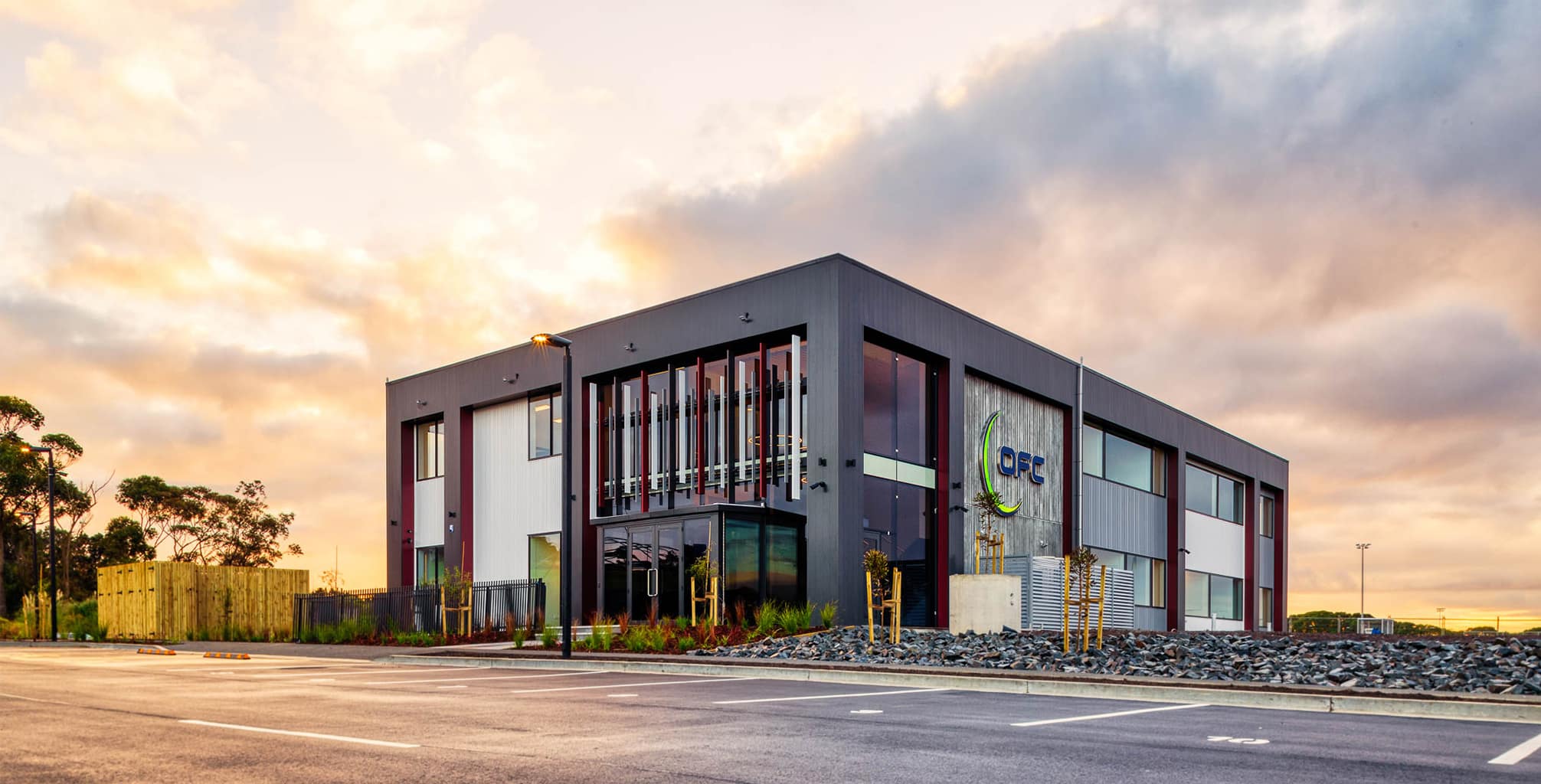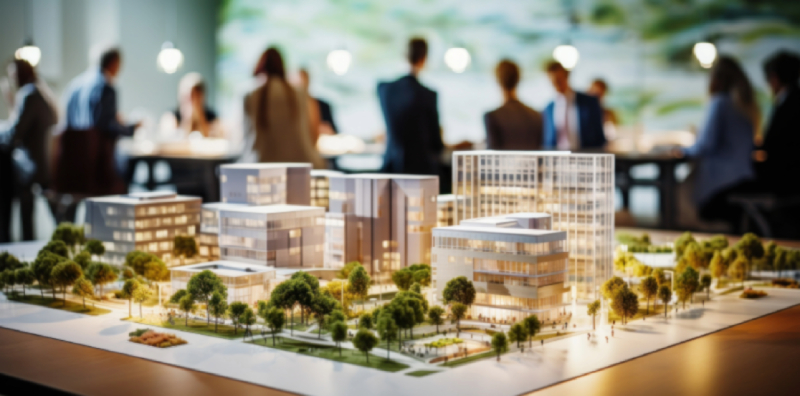Why commercial architects Use Zoning Analysis to Streamline the Planning Process
Wiki Article
Unveiling the Comprehensive Services Given by Commercial Architects for Modern Dope
Commercial Architects offer an essential feature in modern advancement projects. They mix style aesthetics with functionality while sticking to regulatory requirements. Their competence prolongs beyond mere building, including sustainable methods and cutting-edge modern technologies. As they browse complex zoning regulations, Architects collaborate with various stakeholders to bring visions to life. This complex method raises questions concerning the progressing role of Architects fit contemporary areas and the effect of their service future developments.Recognizing the Role of Commercial Architects in Modern Dope
In contemporary city landscapes, Commercial Architects play a critical function fit useful and aesthetic areas that fulfill diverse organization needs. Their expertise prolongs past simple layout; they navigate complicated zoning legislations, developing codes, and ecological regulations. By teaming up with customers, they determine certain demands, ensuring that each job aligns with the customer's vision while also taking into consideration useful facets such as sustainability and cost-effectiveness. Commercial Architects are adept at incorporating ingenious modern technologies and materials right into their styles, enhancing both the capability and power effectiveness of structures. They perform complete website analyses to assess the possible challenges and possibilities presented by a location. Additionally, effective communication with contractors and other stakeholders is vital, ensuring that the project advances efficiently from conception to completion. Ultimately, Commercial Architects contribute in developing spaces that not only fulfill practical objectives however likewise contribute to the general character and vibrancy of city atmospheres.Principle Style: Transforming Ideas Into Reality
Idea layout serves as an important stage in Commercial style, where innovative design remedies emerge from creative brainstorming. This procedure depends on collaborative ideation, uniting diverse point of views to improve and boost initial ideas. As ideas form, they change from abstract concepts into concrete architectural facts.Ingenious Layout Solutions
Changing concepts into truth is the characteristic of ingenious style options in Commercial design. These solutions blend creativity with capability, attending to the distinct demands of contemporary advancements. By leveraging advanced modern technologies and lasting techniques, Architects craft areas that are not only aesthetically appealing yet additionally efficient and adaptable. Emphasis on customer experience drives the design procedure, making sure that environments foster performance and collaboration. Each project take advantage of a tailored approach, where principles are meticulously created to reflect the customer's vision while considering future patterns. Innovative layout services likewise focus on flexibility, permitting modifications over time as organization demands advance. Inevitably, these approaches boost the total value of Commercial spaces, making them crucial in today's competitive landscape.
Joint Ideation Refine
Collaboration functions as the backbone of the ideation process in Commercial architecture, promoting creative thinking and development amongst varied stakeholders. Architects, customers, engineers, and neighborhood participants take part in vibrant discussions, making certain that all viewpoints are considered. This comprehensive technique allows for the exploration of various layout ideas, urging special services that line up with the project's vision. Via workshops and conceptualizing sessions, ideas progress and improve, transforming preliminary concepts right into substantial designs. Technology also plays a crucial duty, with tools such as Structure Information Modeling (BIM) promoting real-time collaboration and adjustments. Ultimately, this collaborative ideation process not just boosts the layout result yet additionally cultivates a feeling of possession and investment amongst all celebrations included, resulting in successful Commercial developments.Zoning Analysis: Navigating Rules and Conformity
As programmers begin on new jobs, comprehending zoning regulations is vital to making sure compliance and avoiding expensive delays. Zoning analysis plays an important duty in this procedure, as it entails reviewing regional zoning legislations that determine land usage, developing height, density, and setbacks. Commercial Architects have the knowledge to browse these complex guidelines, helping customers determine permissible uses and any kind of needed variances.Lasting Style Practices: Structure for the Future
Sustainable design methods are increasingly important in the domain of Commercial design, especially as ecological issues remain to intensify. Architects focus on green materials, energy-efficient systems, and layout techniques that minimize waste and ecological effect. Integrating renewable resource resources, such as photovoltaic panels and wind generators, permits structures to create their very own power and minimize dependence on fossil fuels.Furthermore, lasting design stresses the relevance of indoor environmental top quality. This consists of utilizing all-natural light, improving ventilation, and choosing non-toxic materials to improve occupant health and performance. Green roofs and living wall surfaces are also popular features that add to biodiversity and city cooling.Additionally, Commercial Architects often incorporate water preservation strategies, like rainwater harvesting and drought-resistant landscaping. With these cutting-edge approaches, they develop spaces that not only fulfill modern demands but likewise cultivate a sustainable future, dealing with the expanding need for accountable development in the modern world.Job Administration: Ensuring Timely and Efficient Execution
Efficient project monitoring is vital for making sure that Commercial design tasks are completed in a timely manner and within budget plan. This function includes a series of responsibilities, including the sychronisation of numerous stakeholders, timelines, and resources. Commercial Architects leverage their competence to produce comprehensive project plans that outline essential milestones and deliverables, enabling systematic development tracking.Regular interaction among employee and clients is crucial, cultivating transparency and promoting timely decision-making. Risk monitoring methods are likewise used to determine prospective difficulties early, making it possible for positive options to be developed. By using sophisticated task management tools, Architects can monitor job performance in real-time, making changes as required to maintain effectiveness.Inside Style: Producing Useful and Visual Rooms
Interior decoration plays a vital role in improving both capability and aesthetics within Commercial rooms. Reliable space preparation can maximize process and improve individual experience, while aesthetic layout principles add to a visually appealing environment - commercial architects. With each other, these aspects produce areas that are not only practical yet additionally inspiringRoom Preparation Efficiency
While optimizing the utility of offered space, Commercial Architects prioritize area planning performance to develop both functional and aesthetically pleasing environments. This method involves mindful evaluation of the spatial layout to guarantee excellent usage of every square foot. Architects think about factors such as process, access, and all-natural light to improve usability. By tactically positioning furniture, tools, and workstations, they facilitate motion and communication among customers, promoting efficiency. Additionally, zoning different locations for particular features aids in managing noise and privacy, developing an unified atmosphere. Via reliable room preparation, Commercial Architects can transform restraints right into opportunities, ensuring that each space meets the diverse requirements of its passengers while adhering to regulatory requirements and industry standards.Aesthetic Layout Concepts
Aesthetic layout principles play a necessary role fit atmospheres that are not only practical but additionally visually enticing. These principles guide Commercial Architects in creating rooms that reverberate their website with users while improving brand name identification. Crucial element consist of balance, percentage, and harmony, which work with each other to produce a natural appearance. Color design and materials are thoroughly picked to evoke preferred feelings and sustain the overall motif. Additionally, lights plays a critical role, influencing mood and visibility while highlighting building features. By incorporating these concepts, Architects guarantee that areas are not only functional yet likewise inviting and inspiring. Ultimately, efficient aesthetic style promotes a positive user experience, encouraging involvement and complete satisfaction in Commercial atmospheres.Collaboration With Stakeholders: Cultivating Successful Collaborations
Effective collaborations in Commercial design rest on reliable partnership with stakeholders, making certain that every voice is listened to and valued. This joint strategy entails interesting numerous parties, including customers, professionals, and area members, throughout the style and development procedure. By promoting open interaction, Commercial Architects can address worries, gather understandings, and straighten the job's vision with stakeholder expectations.The integration of diverse perspectives improves creative thinking and advancement, bring about even more practical and aesthetically pleasing designs. Routine meetings, responses sessions, and workshops facilitate this dialogue, allowing Architects to adjust their strategies in response to stakeholder input. Additionally, establishing count on through transparency and accountability strengthens these collaborations, causing a smoother task execution.Ultimately, the success of contemporary developments depends on the Architects' ability to navigate and harmonize varying rate of interests, creating a collective environment that advertises shared goals and common success.Frequently Asked Concerns
Exactly How Do Commercial Architects Manage Spending Plan Constraints Throughout a Task?

What Sorts of Software Program Do Commercial Architects Typically Utilize?
Commercial Architects generally utilize software application such as AutoCAD for preparing, Revit for Structure Details Modeling, SketchUp for 3D modeling, and task monitoring devices like Microsoft Job to improve partnership and simplify process throughout the design procedure.Can Commercial Architects Aid With Acquiring Funding for Projects?
Commercial Architects can assist in getting financing for jobs by preparing visit this site right here thorough proposals, assisting to verbalize layout visions, and offering economic estimates that can improve the possibility of protecting necessary financing from financiers or banks.Just How Do Architects Make Sure Safety And Security During the Building And Construction Process?
Architects ensure safety throughout construction by implementing strenuous design criteria, coordinating with engineers, conducting routine site inspections, sticking to local laws, and fostering communication among all stakeholders to minimize risks and promote a safe workplace.What Ongoing Assistance Do Architects Supply After Project Conclusion?
After task completion, Architects use continuous assistance with upkeep examinations, performance assessments, and layout modifications. They guarantee buildings link satisfy progressing needs, address potential concerns, and preserve compliance with laws, fostering a long-term partnership with clients.Report this wiki page